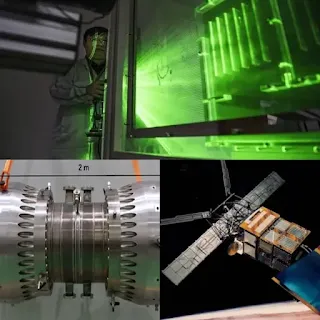A team of Chinese scientists has created the first high-energy microwave emitter based on a Stirling engine, which can be used as an anti-drone weapon.
The South China Morning Post reports that, by using four built-in Stirling motors and an innovative superconducting tape to cool the product components, scientists were able to reduce energy consumption “by 80 percent compared to traditional technologies,” as well as maintain continuous operation of the device for four hours. In addition, they were able to reduce the size of the unit to ensure that radiation could be generated while being transported on the truck. Xu Si, head of the scientific team, explained that all these devices so far "were large in size and consumed a huge amount of energy."
The Chinese high-energy emitter produces a four-tesla magnetic field, which is slightly less than half the strength of the Large Hadron Collider's magnetic field and 68,000 times stronger than the Earth's magnetic field. That is, this device can be used to jam drones, military aircraft, and even satellites.
It is noteworthy that the Stirling engine is a type of external combustion engine. Its working principle is based on periodic heating and cooling of the working part and obtaining energy resulting from pressure changes. The engine was named after the Scot, Robert Stirling (1790-1878), who created a thermodynamic model for these engines.
A huge satellite returns to Earth without the possibility of determining when and where it will fall
A "dead" European satellite is preparing to return to Earth later this month, in a process that will be closely monitored by experts.
This satellite is the European Space Agency's European Remote Sensing Satellite ERS-2, which was launched into Earth orbit in April 1995 and ended its Earth observation missions in September 2011, when the European Space Agency emptied its fuel tank to reduce its altitude from 785 km to about 573 km in order to significantly reduce the risk of collision with other satellites or space debris, and to ensure that it can return to the Earth’s atmosphere within the next fifteen years, according to officials at the European Space Agency.
According to the agency, ERS-2 “was the most advanced Earth observation spacecraft ever developed and launched by Europe.”
Dr. Minjae Kim, an astrophysicist at the University of Warwick, said that the satellite is equipped with advanced radar instruments that have “proven invaluable” and are used to monitor natural disasters.
At the time of take-off, it weighed 2,516 kg, and now, without fuel, it weighs approximately 2,294 kg.
ESA officials said objects of similar mass enter Earth's atmosphere every week or two on average.
It is noteworthy that every year thousands of extraplanetary objects, such as failed moon landing craft and meteorites, land on Earth. Although the weight of these meteorites usually ranges from 50 g to 10 kg.
Kim added: “While most of it arrives in the form of dust or small particles that are invisible to us, space rocks about 10 meters wide, equivalent in size to the 11.8-meter ERS-2 satellite, are expected to enter the Earth’s atmosphere.” Every six to 10 years."
He continued: "Large objects rarely pose a threat to civilization, and this only happens once every few million years."
It is too early to predict where and when ERS-2 will collide with the Earth's atmosphere. The satellite will disintegrate when it reaches an altitude of about 80 km, and ERS-2 will likely burn up in the Earth's atmosphere, and it is expected that no debris will remain that could cause collisions or damage on Earth.
If there is debris, there is a high probability that it will fall into the ocean, as water covers about 70% of the Earth.
Dr. Kim explained: “With regard to the ERS-2 satellite, it is unlikely to pose a threat upon its return, especially since it was specially configured to reduce the possibility of fragmentation. As it descends through the Earth’s lower atmosphere, it is expected to burn up completely, although "The course of its uncontrolled return cannot be accurately predicted."



